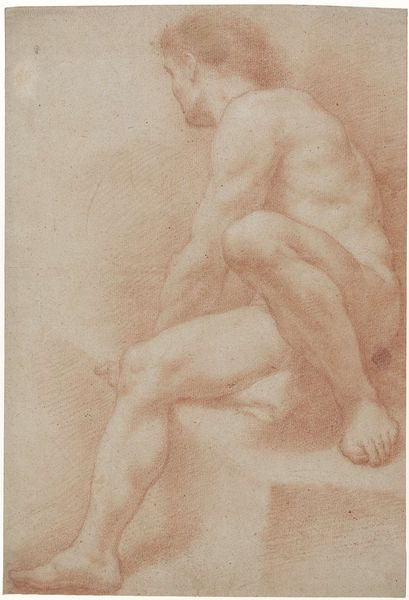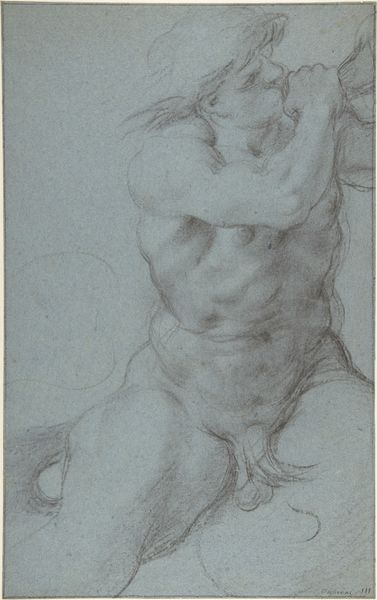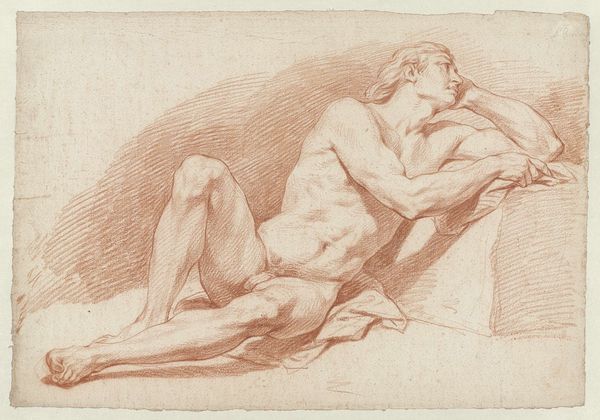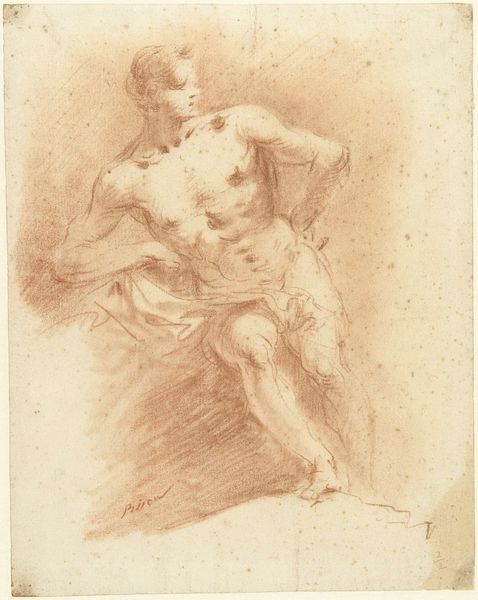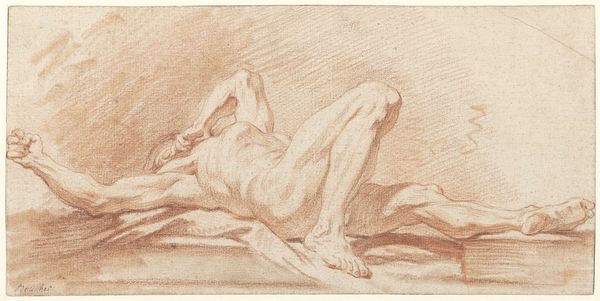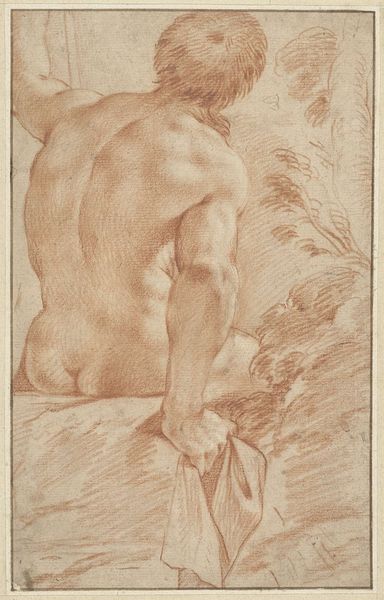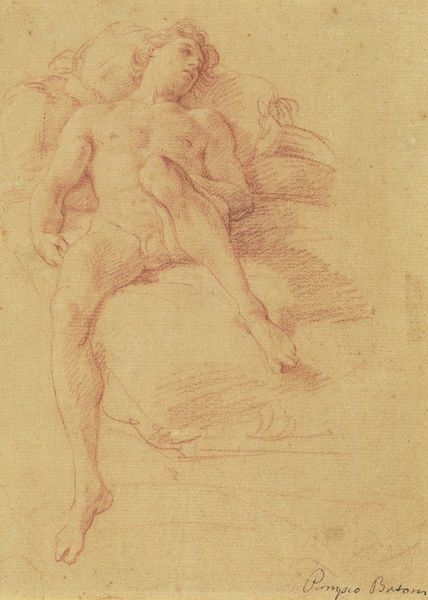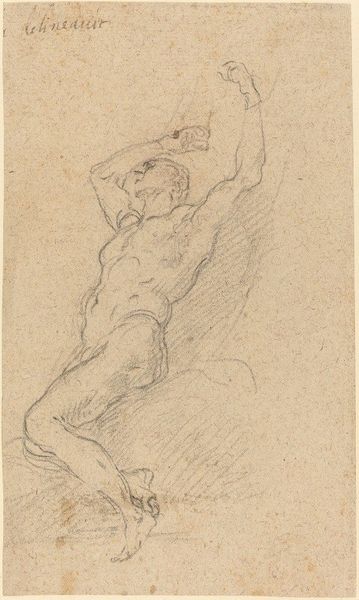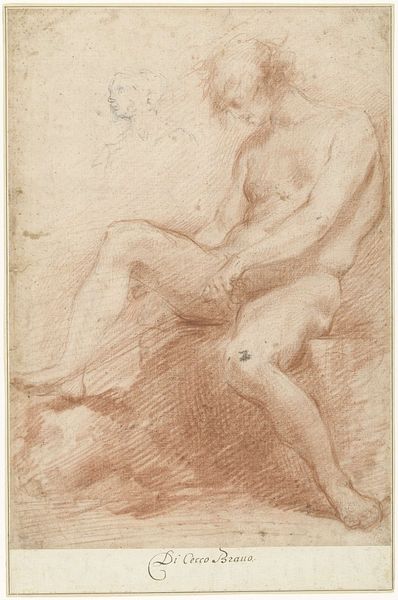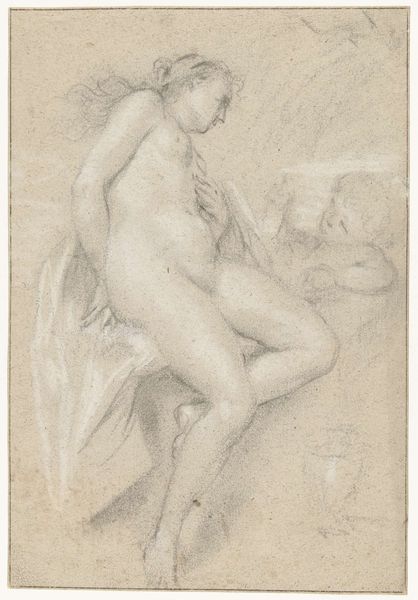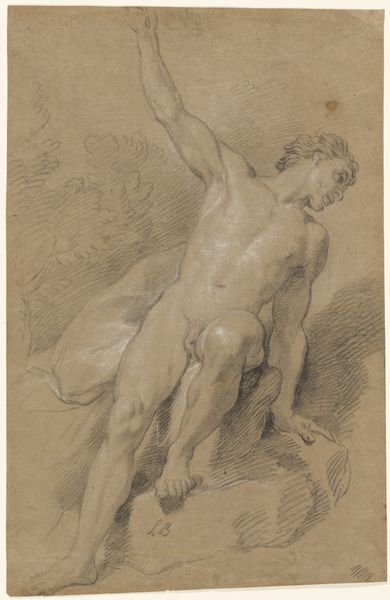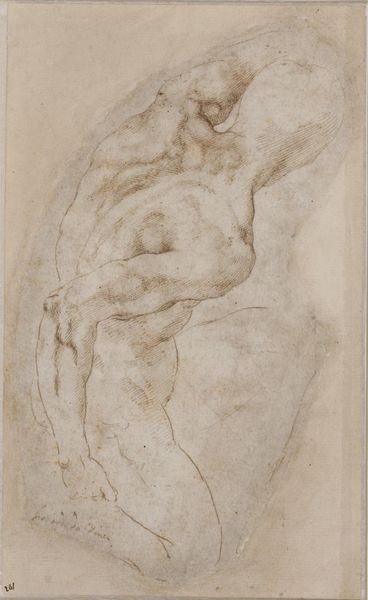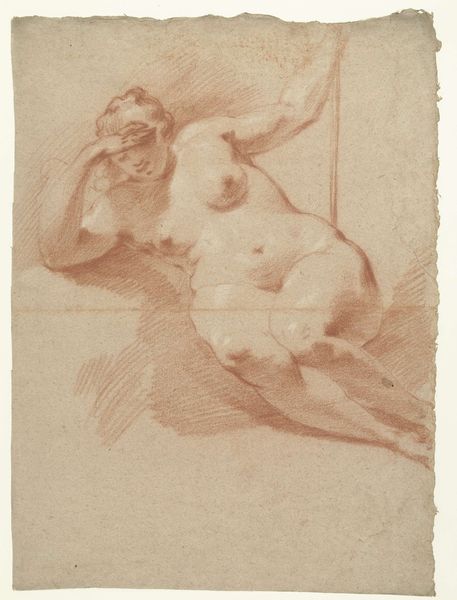
drawing, charcoal
#
portrait
#
drawing
#
pencil sketch
#
charcoal drawing
#
pencil drawing
#
portrait drawing
#
charcoal
#
academic-art
#
nude
#
realism
Dimensions: height 543 mm, width 323 mm
Copyright: Rijks Museum: Open Domain
Curator: This drawing, held here at the Rijksmuseum, is entitled "Zittend mannelijk naakt, profiel naar rechts," or "Seated Male Nude, Profile to the Right" by Jan Willem Pieneman, dating sometime between 1789 and 1853. Editor: My first impression is its striking academic quality, yet, oddly, I find myself more captivated by the gestural uncertainty than the anatomical accuracy. The pose feels strangely… unresolved. Curator: Interesting. Note the use of red chalk; Pieneman uses cross-hatching to define form and shadow. This technique serves to flatten and simplify, which could perhaps explain your perception of unresolved tension. It’s a study, of course, likely intended for larger compositional work. Editor: Agreed. The hatching creates a fascinating flatness, almost defying the three-dimensionality it tries to portray. It brings to mind the rigid artistic hierarchies prevalent at the time, academies pushing a certain…idealized, and perhaps unattainable, perfection onto the male form, one divorced from lived reality. Is he a hero, or a victim of that standard? Curator: Certainly, one could interpret the artwork through that socio-political lens. But let’s also consider the purely visual language: the bold line describing the back, against the much softer modeling of the torso, for example. Does this not evoke a sense of push and pull, drawing the eye in specific directions across the page? The extended arm acts as an indicator of the space this figure might inhabit. Editor: Ah, you draw me back to the canvas! Fair point. Still, in its presentation, this drawing, presented outside its possible contextual existence feels almost confrontational given shifting cultural standards about art and gender representation. It demands we confront what was, what is, and what might be. Curator: Indeed, this drawing exists now in a dialogue— with both its own time and ours. It can stand as a point from which we can launch new creative journeys and re-examine artistic values. Editor: And, for me, question assumptions. To recognize beauty even when—and perhaps especially when—it complicates our understandings.
Comments
No comments
Be the first to comment and join the conversation on the ultimate creative platform.
